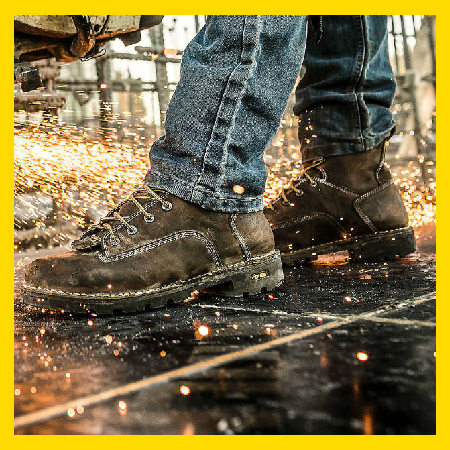Currency
December 05, 2018

It’s important to remember that there is such a thing as the right boot for the right job. It’s every employer’s or safety manager’s responsibility to communicate specific safety gear requirements, including crush and impact protection. However, a variety of other non-
regulatory performance factors that go into safety footwear design can have tremendous impact on comfort, usability and surefootedness on the jobsite.

Torsional stability is most important in a boot when work is done on uneven surfaces or rocky terrain, where feet may bend and/or twist, increasing the risk for injury. Our feet are more than just a connection between our body and the ground below – they’re intricate mechanisms that are connected to the rest of the body and adapt to the uneven surfaces we walk on every day. Thus, a solid work boot shouldn’t hinder our mobility on the job and, in terms of protecting the foot, should offer the ability to strengthen our capacity to do the job. Uneven surfaces give the body – especially the feet – the most trouble. On a construction site, where the ground is often rough and rugged, is where torsional stability in a work boot offers a significant advantage. Essentially, if bending and twisting of the foot occurs in a work area, this is where the entire foot needs to be supported. Without adequate torsional support, workers are more likely to experience foot and leg fatigue, knee and back pain, and eventually an injury because surefootedness is lacking.
In environments where a sturdier platform is required, some workers opt for a thick, stable outsole, such as that of a welted construction, either proprietary or Goodyear welt. This outsole construction, while offering an incredibly sturdy platform, has less flexibility for toe flexion, especially with knee-down work. A relatively new and growing technology introduces torsion stability from heel to forefoot, where, at the metatarsals, the boot flexes to allow for knee-down work. Medial and lateral support from an ergonomic heel cup also helps reduce foot fatigue.
When the work environment includes plenty of uneven surfaces, the right boot for the job is one that delivers on torsion stability.

Torsional stability is most important in a boot when work is done on uneven surfaces or rocky terrain, where feet may bend and/or twist, increasing the risk for injury. Our feet are more than just a connection between our body and the ground below – they’re intricate mechanisms that are connected to the rest of the body and adapt to the uneven surfaces we walk on every day. Thus, a solid work boot shouldn’t hinder our mobility on the job and, in terms of protecting the foot, should offer the ability to strengthen our capacity to do the job. Uneven surfaces give the body – especially the feet – the most trouble. On a construction site, where the ground is often rough and rugged, is where torsional stability in a work boot offers a significant advantage. Essentially, if bending and twisting of the foot occurs in a work area, this is where the entire foot needs to be supported. Without adequate torsional support, workers are more likely to experience foot and leg fatigue, knee and back pain, and eventually an injury because surefootedness is lacking.
In environments where a sturdier platform is required, some workers opt for a thick, stable outsole, such as that of a welted construction, either proprietary or Goodyear welt. This outsole construction, while offering an incredibly sturdy platform, has less flexibility for toe flexion, especially with knee-down work. A relatively new and growing technology introduces torsion stability from heel to forefoot, where, at the metatarsals, the boot flexes to allow for knee-down work. Medial and lateral support from an ergonomic heel cup also helps reduce foot fatigue.
When the work environment includes plenty of uneven surfaces, the right boot for the job is one that delivers on torsion stability.









